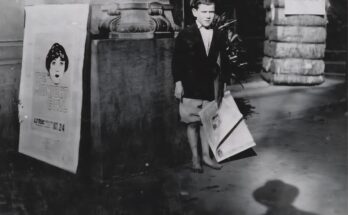Simone Kastenbaum was born in Paris, France, into a Jewish family during a time when Europe was on the brink of one of its darkest periods. Paris, a city of art, culture, and diversity, had a thriving Jewish community that contributed significantly to the fabric of French society. Simone’s early life was likely one of warmth, family, and promise, but all of that began to change with the rise of antisemitism in Europe and, ultimately, the German occupation of France in 1940. When she was still just a child, her world turned from one of relative safety to one of ever-growing peril.
Under Nazi occupation, and with the collaboration of the Vichy regime, French Jews were increasingly marginalized and targeted. The infamous yellow star was imposed, Jewish families were registered and monitored, and roundups became routine. The Drancy internment camp, just outside Paris, became the central transit point for Jews being deported to Auschwitz. Simone, like tens of thousands of others, was eventually arrested and sent to Drancy — a grim holding place filled with uncertainty, deprivation, and dread.
On 31 August 1942, Simone was placed on one of the early transports from Drancy to Auschwitz. These trains were overcrowded cattle cars with no sanitation, no food, and almost no air. The journey took several harrowing days. For a child, such a journey was not only terrifying but also physically unbearable. Simone, like many others, would have endured this hellish trip in the arms of her parents or other loved ones, not knowing what awaited her at the journey’s end.
Upon arrival at Auschwitz, a selection process was immediately carried out on the platform by SS doctors and guards. Those deemed “fit” for labor were sent to the camps; the rest — the elderly, the sick, mothers with young children, and unaccompanied minors — were sent directly to the gas chambers. As a young girl, Simone stood no chance. She was selected for immediate extermination, her life deemed unworthy by the Nazi regime’s murderous ideology. Her death was swift, impersonal, and part of the systematic annihilation of the Jewish people.
Simone Kastenbaum was one of the more than 11,000 French Jewish children who were deported and murdered during the Holocaust. She was not a soldier or a political figure. She had no power, no defense, and no future. She was a child — perhaps no older than five or ten — whose only “crime” in the eyes of the Nazis was being born Jewish. Her murder, like those of millions of other children, represents the most profound cruelty of the Holocaust: the deliberate destruction of innocent lives.
There are no known letters, diaries, or photographs of Simone. Like so many others, she left behind only a name, a transport number, and a date of death. But these fragments are enough to remind the world of who she was: a daughter, a child of Paris, a victim of one of history’s greatest atrocities. Her story is important not because of fame or influence, but because every life matters — and every stolen life deserves to be remembered.
In remembering Simone Kastenbaum, we bear witness to the lives destroyed by hatred, and we commit ourselves to preserving the memory of each victim. Her name now appears in memorials, archives, and remembrance projects across the world — a quiet but powerful protest against forgetting. She may have lived only a few short years, but her story continues to speak across generations.
Let Simone’s memory be a call to conscience. Let it serve as a reminder of the horrors that indifference and bigotry can unleash. And let it strengthen our resolve to ensure that no child, anywhere in the world, ever faces such a fate again. Simone Kastenbaum was a child of Paris, a victim of Auschwitz, and a symbol of the millions of voices silenced too soon. May her memory be a blessing — and a warning.


